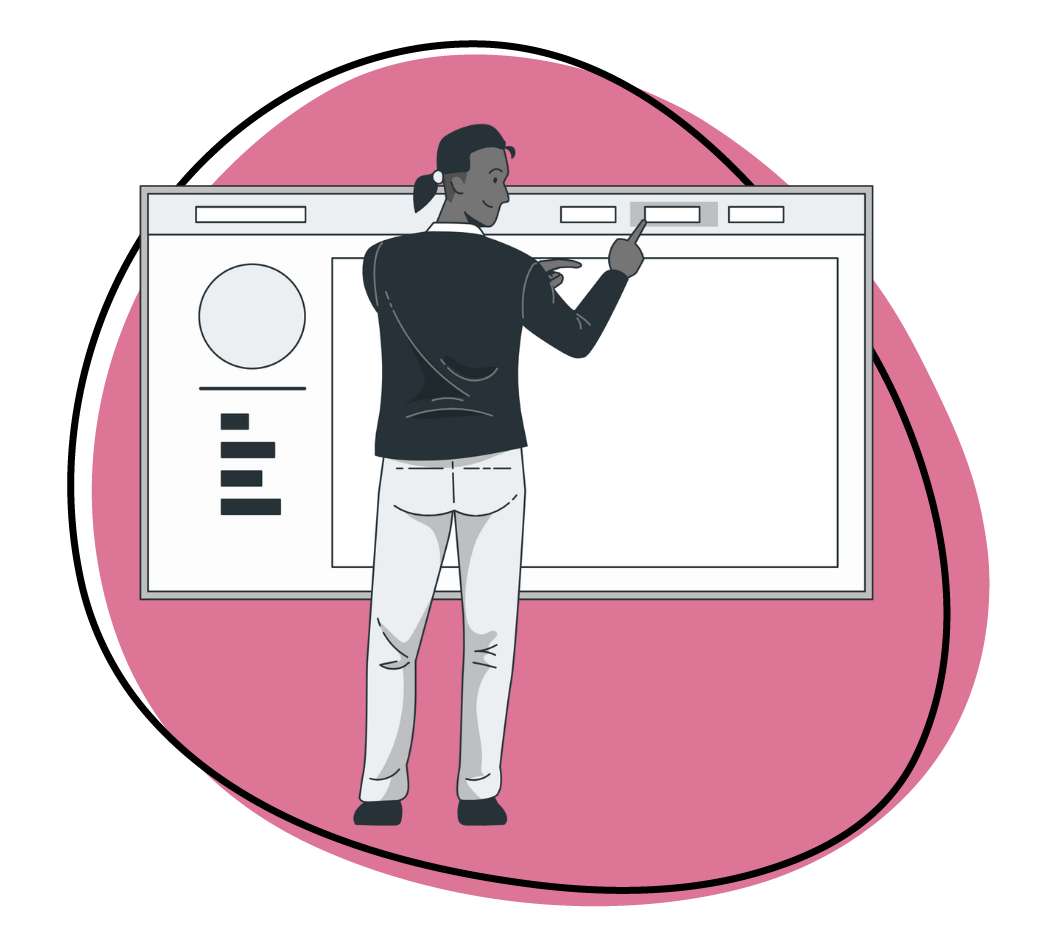The largest mistake marketing professionals make is, without a doubt, not properly using visual content. Humans have evolved to heavily rely on their visual senses. In fact, your brain processes images up to 60,000X faster than text alone. This is why about 65% of all your customers tend to digest information visually.
If this is true, then why is your marketing team constantly focusing on written words?
Standard Copy Vs. Visual Content
Blog articles, website copy, social media posts. These are all powerful marketing tools, enhance your visual content strategy with unique, editable templates that make creating infographics and visuals a breeze. Simplify design tasks without extensive skills. However, if they are being deployed without visual content, you are missing out on an incredible opportunity.
What is Visual Content?
Visual content is the image-based material used in marketing to attract people to your website, product or service. Think infographics, videos, screen recordings, snippet tool, annotated screenshots, and GIFs.
Why is visual content so important when it comes to marketing?
- If relevant visual data is paired with information, consumers can retain 65% more of that information three days later.
- Video has now surpassed blogging as the most popular form of online marketing
- Major platforms such as Facebook, LinkedIn and Twitter are changing their algorithms to favour visual content
- Online readers spend more time looking at the images than they do reading text
Visual Content Creation- The Struggle is Real
Unfortunately, not all marketers were lucky enough to attend design school. This makes the world of Photoshop and Illustrator a daunting place. You might know a few tips and tricks to edit photos, but the process overall wastes precious time. And this is just for static images. Most marketing professionals will stumble when it comes time to create multimedia tools such as GIFs, tutorial videos and screen recordings.
Luckily, Zight (formerly CloudApp) makes the process of capturing, editing and sending visual content incredibly easy. It is an all-in-one tool that allows you to create captivating visual content in seconds.
Zight (formerly CloudApp) isn’t just an asset for marketers. It’s a full enterprise system that brings unique value to each department. Sales reps, developers, customer support agents, and designers all save time by using Zight (formerly CloudApp), impressing clients with custom visual content.
You might be thinking, well that all sounds great, but how do I put that into practice? We have you covered. Here are 7 visual content strategies you can implement today.
1. Add Validity to Your Images – Annotate to Add Quotations
An image of a person or a product has the ability to stir up consumer attention. But, an image with a quotation creates a much more memorable visual experience. This visual content strategy has the ability to add clout to a blog or social media post and can be implemented in two steps.
Also, a well-crafted social media checklist can ensure that this content is visually engaging and consistently aligned with your marketing goals.
- Pick an impactful quotation. This could be from a person within your company or a famous influencer in your industry.
- Select a photo that relates to the quote. Typically a powerful headshot or a related image, such as the Tesla we used with the Elon Musk example above.
A few bonuses to this strategy: If you are posting about influencers in your industry and sharing impactful messages, they may respond to your content. Additionally, these images typically attract a lot of engagement, giving you the opportunity to start a conversation with customers. Tools like Betterpic can help enhance the quality of your photos, ensuring your visual content leaves a strong impression.
2. Direct Attention With Screenshots
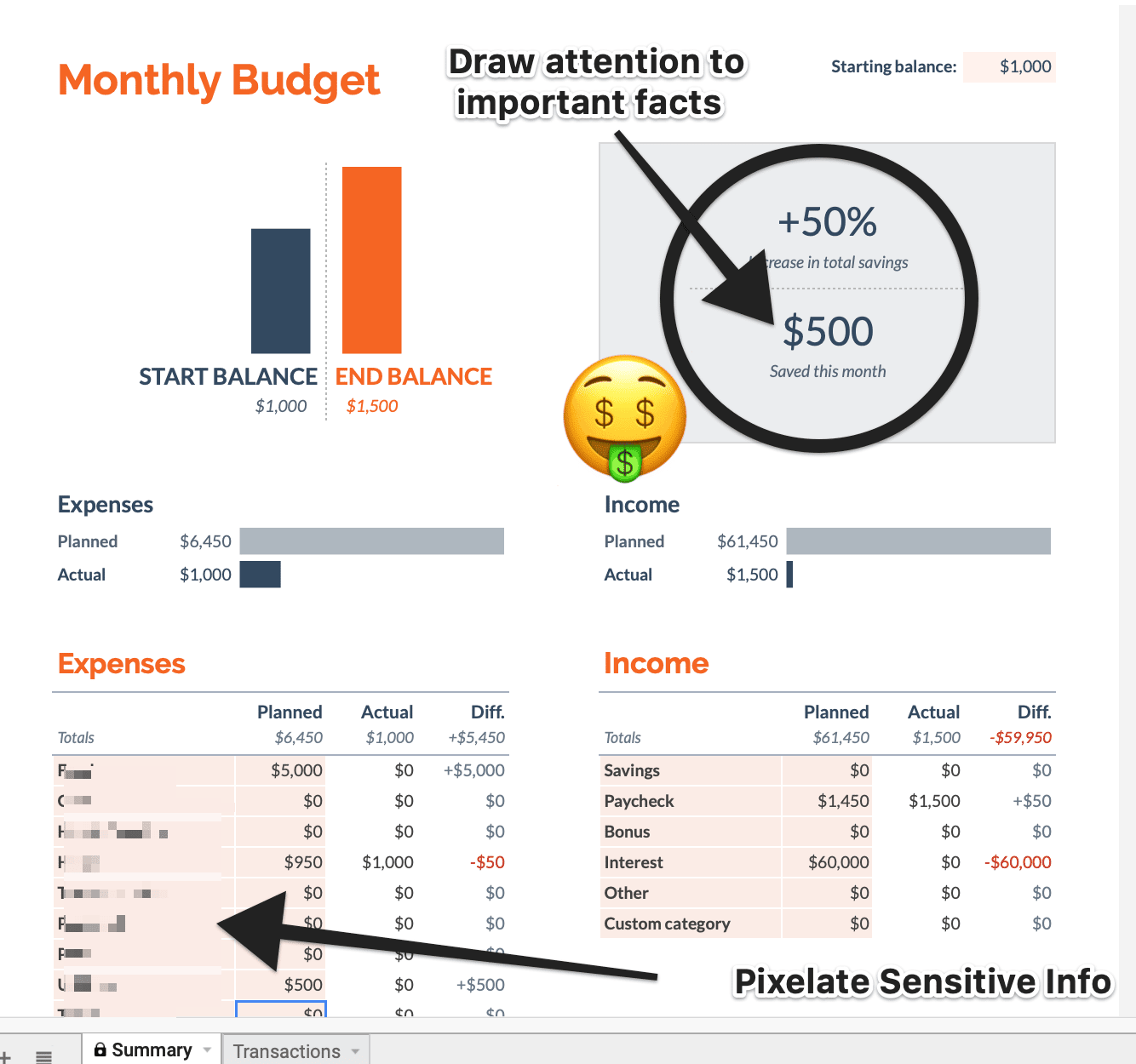
Attention is at an all-time low. The online world is an endless sea of content and advertisements for the average consumer. With this in mind, you can create visual marketing assets that physically push the attention to where it is needed the most. When a user glances at your picture, you only have a second to convey value.
Use Zight (formerly CloudApp) to your advantage and annotate images in seconds. Use an arrow to point, or a shape to outline a data set. You can even use a pixelation tool to blur out sensitive information on a screenshot. Feeling a little cheeky? Add in an emoji to lighten the mood. When it comes to editing a picture, Zight (formerly CloudApp) does it all.
3. Create Your Own Memes
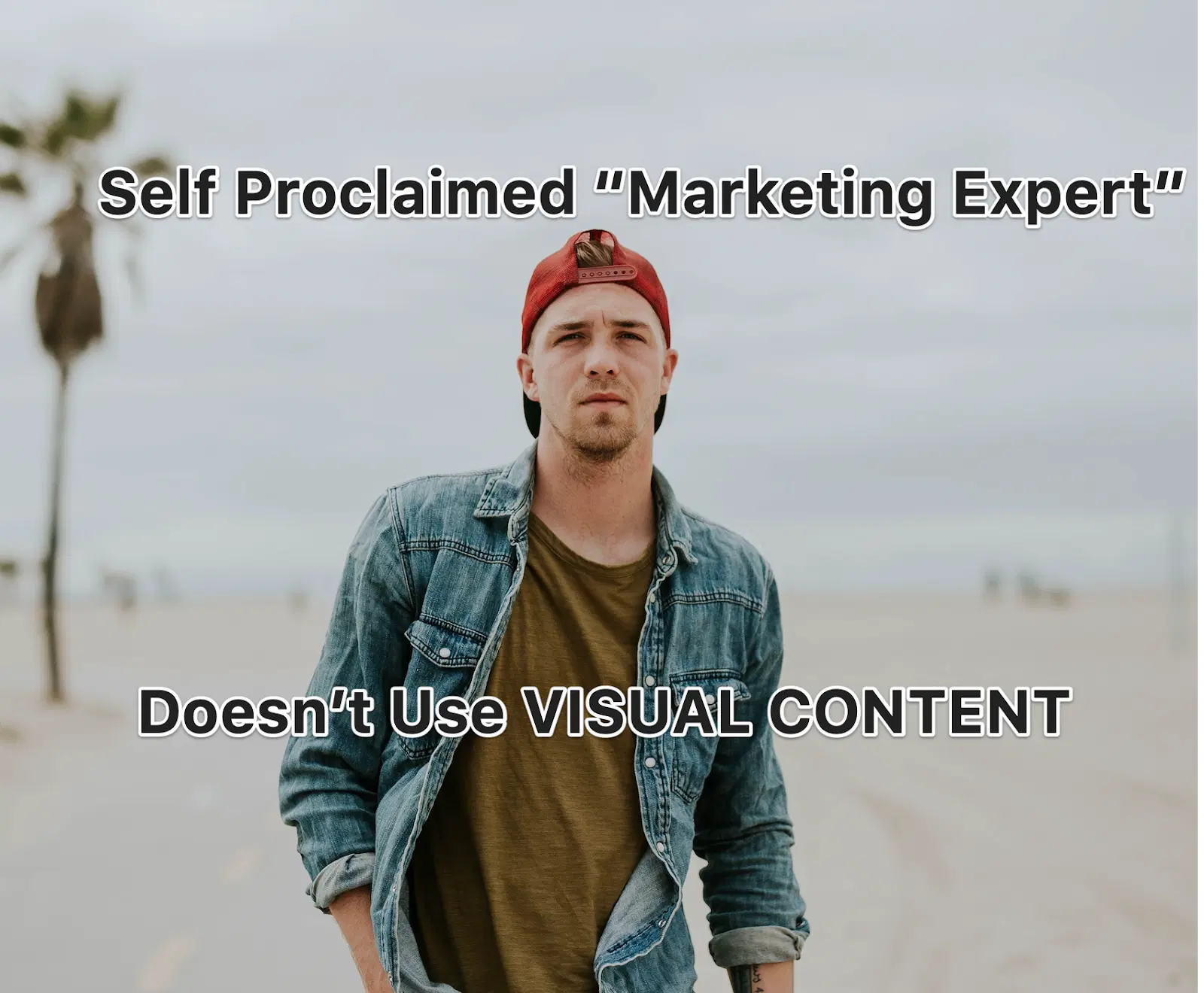
Your consumers may be speaking a brand new language without you even knowing about it. Too many marketers create content within their professional safety net. Yes, you must be sensitive in regards to the pictures or the words that you share, but don’t be afraid to mix things up with a meme.
Consumers spend, on average, over 100 minutes on social media per day. Are you capitalizing on that time? Yes, your company might create social media posts, but the problem with simple content is that it is expected. What we mean by that is that consumers expect businesses to create Facebook posts to try and sell their products or services. It is quite rare that an average consumer is overly excited about a company generated post.
However, when an individual is browsing and they come across a meme, they expect humour. They know how memes work and understand that if they take a few seconds to read it, they will likely receive some value. Take a screenshot of a picture and use Zight (formerly CloudApp)’s mouse snipping tool to drop text above and below the subject. Voila. You’ve just made a meme.
Meme Tips:
- Don’t be too serious
- Utilize humor
- Be timely. Leverage recent media stories
- Use the language and slang of your customer
4. Show Your Team’s Personality with GIFs
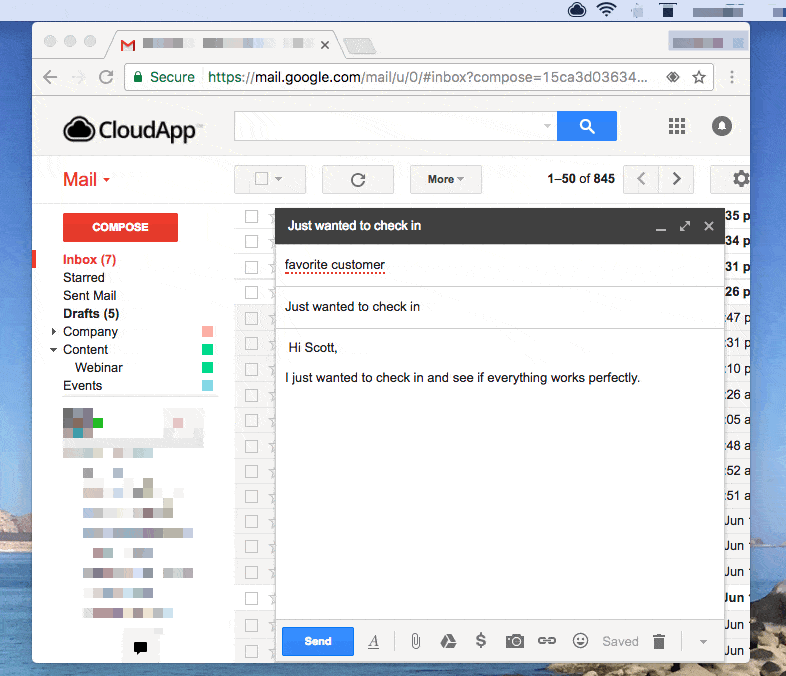
Emails are not innovative. Most professionals receive over 100 every single day. How are your email messages going to be different? It’s hard enough to get your customers to open your emails, let alone getting a message across with the content.
Zight (formerly CloudApp) allows you to create your own GIFs in seconds. With a few clicks, you can record your screen or record with your webcam. After recording, your GIF is stored in the cloud, ready to be shared with an automatically generated link. Ready to spice up that email? Simply drag your GIF into the window and it’s ready to share.
5. Data-Supported Images
The amount of false or poor information found online today is appalling. The negative side effect of this fact is that consumers are extremely wary. Humans love data-backed anything because it conveys previous testing. We want to know how many times faster something is. We want to understand as a percentage, the effects of a new tool. Data, data, data- it’s so important for every company.
Anytime you are looking to garnish a little more attention, use Zight (formerly CloudApp) to annotate a screenshot and add relevant data. Don’t forget to provide a nod to your data source somewhere and always be on the lookout for another interesting set of numbers to share.
6. Infographics
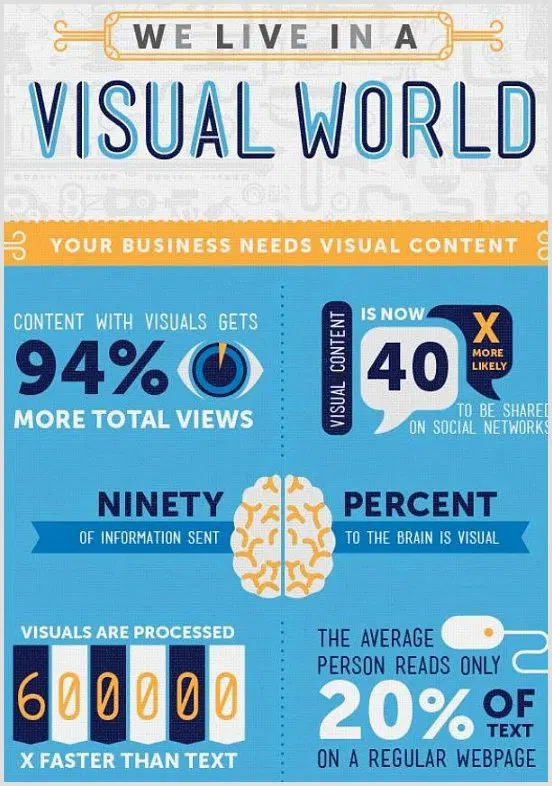
After receiving hundreds of emails in a day, most people are tired of reading. They are still eager to learn but they have zero desire to read large blocks of text.
Infographics are the perfect combination of visual content and data-driven points. In only a few seconds, your consumer can gather and access 6-8 of the most important points on a subject. Not sure if you want to make one? Well, an infographic is about 30X more likely to be consumed than a purely text-based document. Perhaps skipping this weeks blog for an infographic isn’t such a bad idea.
Collect some screenshots, annotate where required and build your very own infographic! Not sure where to start? The Zight (formerly CloudApp) team highly recommends the Venngage tool for creating engaging, visual graphics.
7. Tutorial Videos, Webcams and GIFs
When it comes to visual content, this is the most important category. Video is king and typically trumps all images, graphs and annotated content. Here are a couple of stats for you to consider:
- Over 500 million YouTube videos are watched every day
- YouTube now has over 1 billion users (or ⅓ of the entire internet)
- 92% of mobile video content viewers share videos with others
- 64% of consumers make purchases after watching
Whatever your company offers, hopefully it is now clear that video must be part of your strategy moving forward. The question is, where to start?
There are a lot of professionals that are intimidated by video. They don’t know what software to use, they don’t know how to work with the files, their hard drives get clogged up and editing seems complicated. Zight (formerly CloudApp) solves all of these problems. It is incredibly easy to record and edit a video with Zight (formerly CloudApp). After recording, trim and snip your content until you are happy with the final product.
Want to share a video with a personal touch? Zight (formerly CloudApp) also allows you to record with your webcam or record with your webcam and the screen at the same time. Conveniently enough, this is the perfect formula for creating tutorial videos. Tutorial videos are one of the “super pieces” of visual content because most users watch the entire video. They are attention magnets. Additionally, consumers are constantly searching for the content (questions answered) in tutorial videos making it slightly easier to get your content in front of them.
Implement these 7 strategies today and watch your Google ranking and inbound marketing results grow. If you are interested in learning more about how Zight (formerly CloudApp) helps companies, click HERE.
